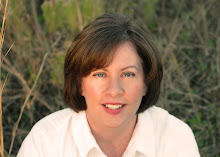I started reading a great book last week and about a third of the way through a thought hit me: What if THE HEROINE was THE HERO and THE HERO was THE HEROINE?
Meaning, what if their rolls were reversed?
Suddenly the book became much more interesting and the one on my Kindle seem kind of status quo.
Sure, some of the other plot points would be different if SHE was a HE, but it would also raise new, more intriguing plot obstacles.
In an historical book, it might be hard to switch rolls. If you were writing about the Alamo, it would be hard to have a man spying on General Santa Anna since the spy was a female prostitute.
But, what if you took an historical event, like the pilots of World War II, and told the story of the women pilots. Or a woman instructor to the new male pilots?
Turn Your Story Upside Down!
I’ve blogged about this before but I think it’s worth repeating. We all know there’s no new story. I’m working with a new writer on her second novel and there are some very similar story points to a book I’ve written. But I know she’s not copying me. Susie and I often have a “like” scenario or two.
“Hey, that was in my last book.”
You’d think we’d remember, but we don’t. Because the scenario is fresh when it comes from a new voice.
My husband and I discovered the TV show, The Guardian, on Netflix. The story line is so close to my character Max in the Songbird Novels, I wished I’d watched the show when I was writing the books! Then again, maybe not.
So, how can we make our stories fresh? Turn things upside down.
In Love Lifted Me, the hero Max moves his family to Texas to take a position as a football coach. I had in mind all along that Max would take over a losing program that had once been stellar. State champs two or three times a decade since the ‘20s. Legendary coaches and players, but something went wrong with the school’s football program.
So much, they hired a guy who’d never coached before to be their coach. That was my first “turn the story upside down” venture.
For the school itself, I figured after a decade of losing, the football program would be broken down, poor, barely holding together.
But when I wrote the scene with Max driving to see the school for the first time, it felt so ordinary and expected. Run down field. Small field house, last centuries equipment in the gym…
z-Z-z-Z-z-Z
So I turned it upside down. What if the school was rich? State of the art? Field house fit for a college?
Ah, now the scene was interesting. It caused an emotional jolt for my character. Why did this rich program hire him? The could get any coach they wanted.
The change created work for me. I had to answer those questions and write a plot to fit my new scenario. The change created a deeper, better story with a mystery and a true antagonist.
Here’s another example. I was brainstorming with author Mark Mynheir one day and in the middle of plotting a sharp shooter verses a senator story, I said, “Let’s change roles.”
The hero was the sharp shooter. The heroine was the senator. But what if the heroine was the sharp shooter? And the hero the senator?
I loved the idea of a woman sharp shooter. So much I didn’t stop selling it to Mark until he was a believer too!
Here are some ways to strengthen your story by turning it upside.
- Can your hero and heroine switch places? Can your male protagonist be a female? Can the female be a male? What new obstacles and tension are created if you do that?
- Can you change a scenario? A nice wedding goes bad? A first kiss is to hide from an ex-fiancé walking past? An old car is new? A new car is old? She doesn’t live in her hometown but a big city? Instead of going to a traditional church, the spiritual thread is a conversation with a co-worker or family member.
- Switch up traditional roles. I had a female defensive coordinator on Max’s high school football coaching staff. Can your hero visit a female doctor? What about his boss? Female? Maybe a male boss would provide more tension. Can your cowboy be a cowgirl? Can you chuck wagon cook be a girl?
- Take a look at your dialog and prose. Are you delivering too much? Can you tense up the dialog by not giving the typical answer. What if she says no to a first date or marriage proposal? What if she asks him out first? What if the murder suspect is actually another police officer undercover?
Never stop asking what if? Come on now, turn your story upside down? What do you see?

Rachel Hauck is the best-selling, award winning author of over 15 novels. Her latest, The Wedding Dress appears in bookstores in April. Rachel serves My Book Therapy as the lead MBT Therapist and excels in assisting aspiring authors to find their story and voice via her one-on-one book coaching.

Comments 2
Fun ideas!
This is one of many gifts I love about you–very heathy to keep brainstorming until you come up with something as startlingly attention-getting as all the planets lining up at once!